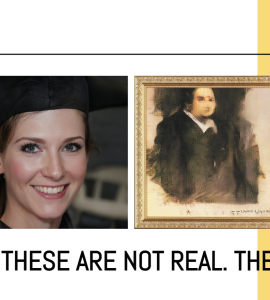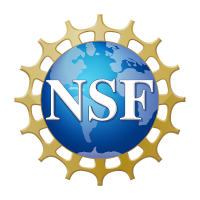
Resource type
Use type
Project name
Standards & Guidelines
Note: This introductory video and lesson were created in 2022. Deepfake technology has significantly advanced since then. Please use the concepts introduced here as foundational, but not current.
Lesson Overview
In this lesson students will explore what deepfakes are, how realistic they can look, and ways to identify them. Students will learn how deepfakes are made and several strategies to identify them.
Total Lesson Time: Two 45 minute lessons
Learning Objectives: Students will be able to . . .
- Identify the source and reference data for a given GAN generated image and a set of possible source and reference images
- Describe and give examples of at least 3 of the 7 clues for identifying deepfakes: hair, eyes, side profile, emotions, teeth, background, asymmetry
- Describe a negative consequence and positive consequence of deepfakes in their own words
Vocabulary Introduced: deepfake, source image or video, reference image or video
Pacing:
Day 1 (If you prefer to do this lesson as one day, do Day 2 only)
- Opening (5 min)
- Introduction to new material, terms, guided practice (10 min)
- Spotting Deepfakes Pretest (10 min)
- Closing (15 min)
Day 2
- Opening (5 min)
- Introduction to new material, terms, guided practice (10 min)
- Spotting Deepfakes Post-test (20 min)
- Closing (10 min)
Planning Guide
Preparation Needed: 15-20 minutes each lesson
Prep Needed for Teaching In-Person:
- Print the selected pre- and post-test forms (4 or 9 questions)
- Spotting Deepfakes Pre-Test - 9 Questions
- Spotting Deepfakes Pre-Test - 4 Questions
- Spotting Deepfakes Post-Test - 9 Questions
- Spotting Deepfakes Post-Test - 4 Questions
Log in or register to view attachments and related links, and/or join the discussion. If you are already logged in, scroll to the bottom of this page for the links.
Activity Usage
Copyright held by MIT STEP Lab
License: CC-BY-NC under Creative Commons
These materials are licensed as CC-BY-NC 4.0 International under creative commons. (For more information visit https://creativecommons.org/licenses/by-nc/4.0/). This license allows you to remix, tweak, and build upon these materials non-commercially as long as you include acknowledgement to the creators. Derivative works should include acknowledgement but do not have to be licensed as CC-BY-NC. People interested in using this work for for-profit commercial purposes should reach out to Irene Lee at [email protected] for information as to how to proceed. Attribution-NonCommercial 4.0 International (CC BY-NC 4.0)
Attribution:
The original "Deepfakes" activity was created as part of the "Creativity and AI" curriculum by Daniella DiPaola and Safinah Ali with support from the MIT Media Lab Personal Robots Group. See more at Exploring Generative Models with Middle School Students

